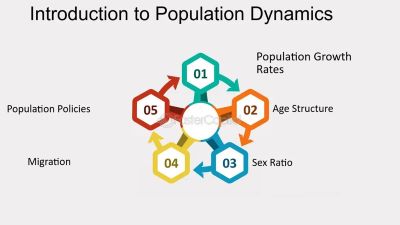Context:
The recent report released by the Prime Minister’s Economic Advisory Council (PM-EAC) has sparked vigorous debates surrounding religious minorities in India, particularly focusing on the Muslim population growth. Intended to portray the safety and absence of discrimination faced by India’s minorities, especially Muslims, the report's conclusions have stirred controversy due to various factors including its timing, utilization of dated data, and selective presentation of demographic trends. This article aims to dissect the nuances of this discourse, delving into historical contexts, demographic realities, and the socio-economic dimensions that underpin discussions on population growth and its implications for different communities in India.
The Well-Intentioned Study: Unraveling Complex Narratives
The PM-EAC report, while well-intentioned, has inadvertently revived age-old debates surrounding minority demographics in India, particularly the Muslim population. Despite efforts to demonstrate the safety and security of religious minorities, the report's reliance on outdated data and selective presentation of statistics has led to its contentious reception. By emphasizing the relatively stable population growth among Muslims compared to Hindus and other religious groups, the report inadvertently fuels fears propagated by certain ideological factions regarding the perceived threat of demographic change.
Furthermore, the report's failure to address significant demographic shifts, such as the exponential increase in the Buddhist population, and its focus on Muslim population growth, has raised questions about its underlying motives and the potential political implications of its findings. While the report aims to assuage concerns about minority persecution, its methodology and conclusions have instead reignited contentious debates surrounding religious demography and identity politics in India.
The Myth of Demographic Anxiety: Historical Perspectives and Contemporary Realities
The narrative of Hindus being under threat of becoming a minority in their own country is not a new phenomenon but rather a longstanding myth perpetuated by certain political and ideological factions. Contrary to claims of demographic anxiety, historical precedents suggest that Hindus have maintained their majority status throughout various periods of Indian history, including during so-called Muslim rule. However, the revival of this narrative in contemporary discourse reflects deeper anxieties surrounding identity, power, and communal politics.
Moreover, the fixation on fertility rates as a sole determinant of demographic status overlooks broader socio-economic factors that influence population dynamics. While higher fertility rates may indicate socio-economic challenges such as illiteracy and poverty, they do not necessarily translate into demographic dominance or political power. Rather than fixating on numerical majority, the focus should shift towards addressing systemic inequalities and ensuring equitable representation and opportunities for all communities within the socio-political landscape of India.
Rhetoric vs. Reality: Challenging Misconceptions and Misinformation
The recent discourse surrounding population growth, particularly among religious minorities, has been marred by rhetoric and misinformation perpetuated by certain political leaders and interest groups. By framing population growth as a form of "population jihad" or a threat to national identity, these actors seek to exploit communal tensions for political gain, thereby exacerbating divisions within society. However, such narratives obscure the complex realities of demographic trends and fail to address the underlying socio-economic factors driving population dynamics.
Moreover, the focus on population growth as a measure of well-being overlooks the multidimensional nature of development and the importance of addressing structural inequalities and systemic barriers to social and economic advancement. Rather than succumbing to fear-mongering and divisive rhetoric, policymakers and civil society actors should prioritize evidence-based approaches that promote inclusivity, equity, and social cohesion.
A Call for Nuanced Approaches: Moving Beyond Coercive Measures
The debate surrounding population control and regulation has often centered on coercive measures and punitive policies that fail to address the root causes of population growth. While some policymakers advocate for legislation aimed at regulating population growth, such approaches overlook the complexities of demographic change and the socio-economic factors that influence fertility rates. Moreover, coercive measures risk violating fundamental human rights and exacerbating social inequalities.
Instead of resorting to coercive measures, policymakers should prioritize holistic approaches that address the underlying determinants of population growth, including access to education, healthcare, and economic opportunities. By investing in initiatives that promote gender equality, reproductive health, and socio-economic empowerment, policymakers can create an enabling environment for individuals and communities to make informed choices about family planning and reproductive health.
Conclusion:
The discourse surrounding population growth and demographic change in India is multifaceted, encompassing historical legacies, socio-economic realities, and political dynamics. While recent reports and studies aim to shed light on these complex issues, they often fall short of providing comprehensive insights into the underlying drivers of population dynamics. Moving forward, policymakers, researchers, and civil society actors must adopt a nuanced approach that considers the interplay of demographic, socio-economic, and political factors in shaping India's demographic landscape. By prioritizing evidence-based policies and inclusive strategies, India can navigate the challenges of population growth while upholding the principles of equity, human rights, and social justice for all its citizens.
|
Probable Questions for UPSC Mains Exam
|
Source – The Hindu







